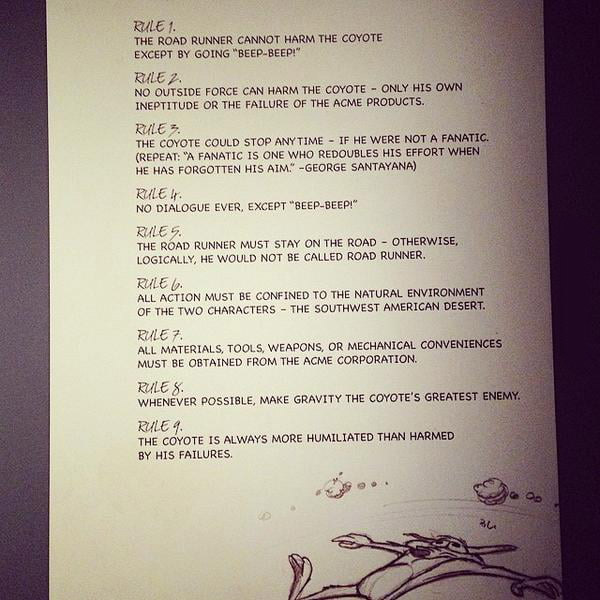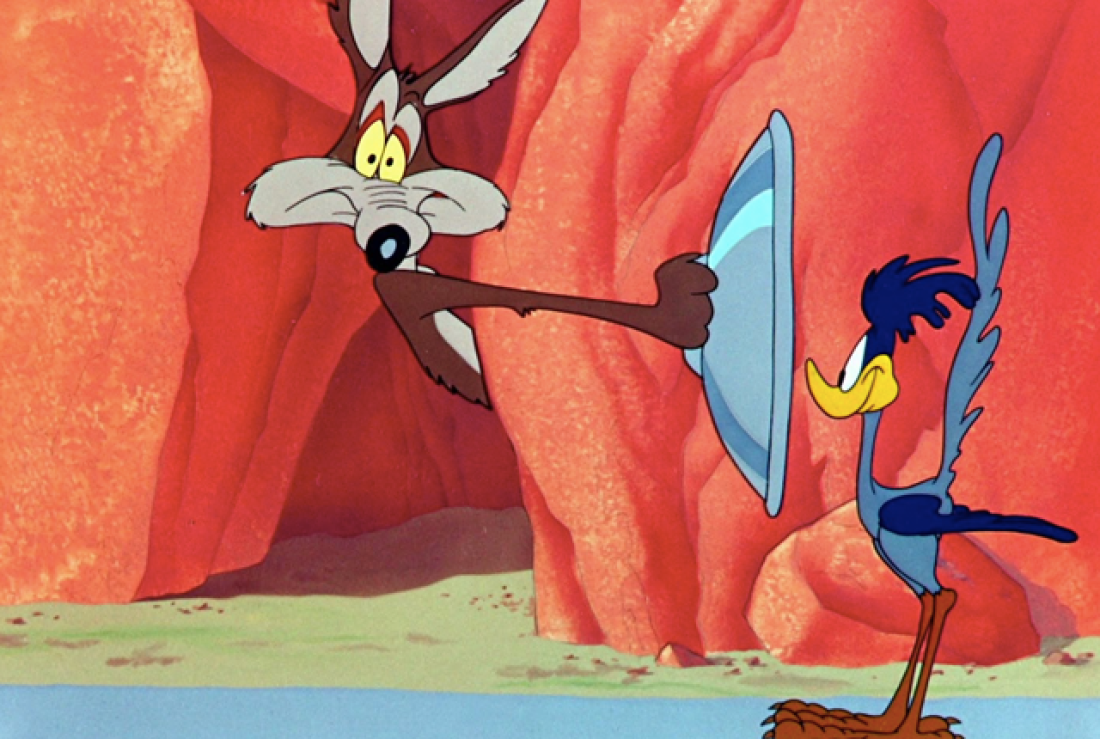The style guide behind Chuck Jones and Road Runner that helped them avoid and create disasters.
While recently in San Diego for work we came across the Chuck Jones and Dr.Seuss Gallery. After chatting with the gallery director, and spending way too much on artwork we couldn’t leave with out, he took us out the back and showed us a copy of Chuck Jones original set of rules for writing Road Runner.
This formed part of a style guide that helped guide the wacky creative process at Looney Tunes and enabled them to create the consistently watchable & loveable series we all know.
The creation of a style guide is something we implore all of our clients to do. It not only defines things like how the logo, fonts and colours are used, but also sets out the rules that make all future work more efficient and consistent and always to a high standard.
It takes time to setup a proper guidelines, but we make that up over the years by being able to get work done quickly and consistently with everything else we do on the brand.
But perhaps more importantly that the basics of logos and colours are things like your tone of voice, your personality, your pillars. These are the things that will help guide ‘WHY, IF & HOW’ you should do anything at all. and it’s something that Chuck Jones nailed in his rules.
Chuck Jones Rules for writing Road Runner Cartoons: Image from What’s Up, Doc? The Animation Art of Chuck Jones exhibit at the Museum of the Moving Image in New York:

Jones’ rules, first made public when he published them in his 1999 autobiography Chuck Amuck: The Life and Times of an Animated Cartoonist, are probably pretty familiar to animation students and Road Runner and Wile E. Coyote fanatics. They are a fascinating testament to the need for clearly defined systems within a wacky creative process.
Here’s a slightly longer version of the rules that Jason Kottke shared a few years back:
- The Road Runner cannot harm the Coyote except by going “meep, meep.”
- No outside force can harm the Coyote — only his own ineptitude or the failure of Acme products. Trains and trucks were the exception from time to time.
- The Coyote could stop anytime — if he were not a fanatic.
- No dialogue ever, except “meep, meep” and yowling in pain.
- The Road Runner must stay on the road — for no other reason than that he’s a roadrunner.
- All action must be confined to the natural environment of the two characters — the southwest American desert.
- All tools, weapons, or mechanical conveniences must be obtained from the Acme Corporation.
- Whenever possible, make gravity the Coyote’s greatest enemy.
- The Coyote is always more humiliated than harmed by his failures.
- The audience’s sympathy must remain with the Coyote.
- The Coyote is not allowed to catch or eat the Road Runner.
Colour Andre is here to help
If you’d like to avoid your organisation feeling like Wile E. Coyote and you’re ready to invest in a style guide that will keep you on track for years to come, please contact Colour Andre. Make sure you visit colourandre.com to see plenty of examples of style guide work.
Tagged with: ACME, Chuck Jones, design, Design Rules, Road Runner, Style Guide



Comments (1)